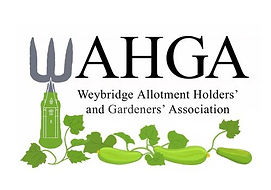
Well, have we had winter yet? A very cold spell in November, and a week of frosty conditions in January is not enough! Though annual weeds have yet to germinate, perennial weeds are green and lush, taking every opportunity to spread their roots!
With the longer days in February, there’s plenty of time for weeding, mulching and planning for the year ahead!
VEGETABLE BEDS
Dig out perennial weeds such as couch grass, bindweed, dandelions and cover any empty beds with well rotted manure or homemade compost.
Help warm the ground for any early crops, such as potatoes and early sowings of broad beans, by pinning down some old compost bags, black side up on the bed, or use cloches.
PLANTING
Plant soft fruit such as raspberry canes and currant bushes, and fruit trees. These can be purchased ‘bare root’ which makes them cheaper, and easier to plant. Have a look at what’s available from Ashridge Trees and Blackmoor Nurseries.
You still have time to dig up, and split, any large rhubarb clumps to give them a new lease of life, any spares can be left on the sharing table! Rhubarb is a hungry plant so spread a layer of manure or rich, homemade compost around (not on) the crown. You can start forcing established plants by covering them with a terracotta pot to block out the light.
PRUNING
Remember the 3 Ds of pruning - remove Dead Diseased and Damaged parts of the plant first, then prune the rest of the plant to an appropriate size and structure. Remove all the the prunings from the ground, weed and mulch
Prune last years canes of autumn-fruiting raspberries down to the ground.
Prune currant bushes into an open goblet shape
It’s your last chance to prune apple, pear and fig trees.
Cut back the dead vegetation from perennial herbs such as oregano, marjoram, mint, sage and chives to encourage new growth.
INDOORS:
Spring clean your shed, perhaps add a gutter and install a water butt. Sharpen secateurs and check that your tools are still fit for purpose.
Plan what you’re going to grow and where, taking into account crop rotation. This will help prevent disease specific to a particular plant taking hold. If the soil is regularly enriched there’s no need to have a fallow season.
Wash plant pots, seed trays and cold frames
Check which seeds you have, the sow by dates and buy or order seeds for the upcoming season,
Start chItting your first early seed potatoes towards the middle/end of February standing them in trays or egg boxes in a light but frost-free position. See the WAHGA Potato Growing Guide below for more information.
Though it’s a bit early to sow most seeds unless you have a heated greenhouse, you can start sowing seeds in a heated propagator for plants that need a long growing season, such as chilli, peppers, aubergines and cucumbers. But don’t be tempted to sow fast germinating, fast growing tender plants such as courgettes, runner beans and sunflowers unless you have a lot of time for potting on and covered space to keep the plants!
Plug plants are another option if you don’t have the time or space to grow from seed. WAHGA has a 15% discount with plug plants from Rocket Gardens, Contact WAHGA (weybridgeallotments@gmail.com) if you need a reminder of the discount code. Plants are delivered in late spring ready for immediate planting.
HARVESTING
The last sprouts, cabbages, kale, leeks,
Winter salad leaves, spinach and chard
Golden turnips, celeriac and parsnips
Spring onions
If you have any parsnips left in the ground, leave a few to go to seed. The flowers they produce in May/June are lovely and perfect for bees.
FLOWERS
Flowering plants which are worth sowing indoors now, or in a heated greenhouse, are sweet peas, lobelia, salvia, antirrhinum, cobaea. and verbena bonariensis. These can be hardened off in a cold frame and planted out after the last frost.
I
N THE GARDEN
Prune overgrown shrubs and hedges soon, and before the nesting season start. Prune buddleia down to a minimum of a metre in height, and as low as 10/15 cm. In late February, prune back shoots on mophead and lacecap hydrangeas to a pair of buds.
Prune roses, if they’re congested cut some of the older stems to the ground and prune the rest by a third.
Cut back herbaceous perennials and trim deciduous grasses before the new green growth starts to appear.
Plant out bare-rooted trees and shrubs. February is also a good time to move shrubs. Make sure you dig out a good-sized rootball.
Lightly prune any clematis that flower in late spring and early summer. Prune wisteria to two buds to encourage flowering.
If there is a dry spell, remember to water pots and planters.
Planning ahead - was your garden uninspiring during December and January? If so plant some of my favourite winter plants - hellebores, Daphne, Hamamelis x intermedia, Cornus alba ‘Siberica’, Salix ‘Mount Aso’, and Sarcoccoca for scent. You can still buy snowdrops in the green for planting now, they will establish to bring you joy in January 2025!
LAWN
For the lawn, you can apply either a winter or spring feed. There are winter grass seeds that can be used now, or prepare any patches for seeding in a few weeks.
HOUSEPLANTS
Wipe the dusty leaves of houseplants with a damp cloth. Remember to rotate your plants to ensure you plant grows evenly.




Comments